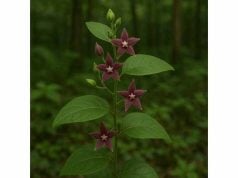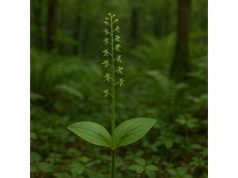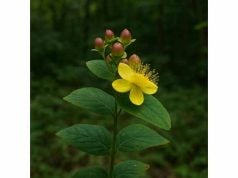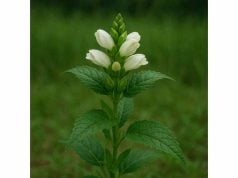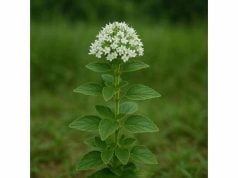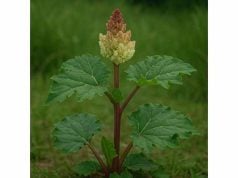
Teucrium is a diverse genus of aromatic perennial herbs and shrubs belonging to the Lamiaceae family, widely used in traditional herbal medicine and modern natural therapies. Rich in bioactive compounds such as diterpenoids, flavonoids, and iridoids, Teucrium species offer a broad spectrum of therapeutic actions including anti-inflammatory, antioxidant, hepatoprotective, and antimicrobial effects. Traditionally, various species have been used to support liver function, alleviate pain, improve digestion, and promote overall well-being. Today, Teucrium finds applications in dietary supplements, herbal teas, and topical formulations, bridging ancient wisdom with modern clinical research to help manage a range of health conditions.
Table of Contents
- Botanical Overview and Identification
- Phytochemical Profile and Active Compounds
- Health Benefits and Core Qualities
- Applications and Usage Safety
- Research Insights and Key Findings
- Frequently Asked Questions
Botanical Overview and Identification
Teucrium is a genus encompassing over 300 species, most of which are found in temperate and Mediterranean regions. Members of this genus are typically herbaceous perennials or small shrubs characterized by their opposite, often aromatic leaves and tubular flowers arranged in whorls. In many species, the leaves possess a rough, hairy texture with a distinct, sometimes pungent odor, and the flowers vary in shades of white, purple, and blue. These plants thrive in a variety of habitats, from rocky slopes and dry meadows to the margins of woodlands.
One prominent species, Teucrium chamaedrys (commonly known as wall germander), exhibits small, ovate leaves with a gray-green hue and clusters of delicate, four-lipped flowers typically flowering in late spring and summer. The robust, creeping growth habit of many Teucrium species makes them ideal for groundcover and erosion control, while their attractive blooms contribute to ornamental gardening. In addition, these plants are well adapted to drought and poor soils, thanks to deep root systems and efficient water use.
Taxonomically, Teucrium is classified under the Lamiaceae (mint) family. This familial affiliation is evident in the square stems and opposite leaf arrangement observed in most species. The genus is highly diverse, with considerable variation in leaf morphology, floral structure, and chemical composition from one species to another. Despite this variability, the common characteristics of aromatic leaves and tubular flowers remain a unifying trait.
Native to regions of Europe, North Africa, and Asia, Teucrium species have been used for centuries in traditional medicine. Their robust nature and adaptability allow them to flourish in harsh environmental conditions, contributing to their enduring presence in arid and semi-arid landscapes. Over the centuries, traditional healers across the Mediterranean and Central Asia have used teas from these plants to treat various ailments including liver disorders, digestive issues, and inflammatory conditions.
Modern horticultural practices have enhanced the cultivation of Teucrium, ensuring both ornamental appeal and medicinal quality. Propagation techniques such as cuttings and seed germination are employed to produce consistent, high-quality plants for both commercial and home gardens. The ease of cultivation coupled with the plant’s aesthetic appeal has led to its widespread use not only in traditional herbal medicine but also in contemporary landscaping and natural product formulations.
In addition to its medicinal and ornamental values, Teucrium has cultural significance in several regions. It is often featured in folklore and traditional remedies, symbolizing resilience and natural healing. Researchers continue to study its evolutionary adaptations, which have enabled it to thrive in diverse climates and soil conditions, further cementing its place as an important botanical resource.
Overall, the botanical profile of Teucrium is distinguished by its aromatic foliage, distinctive floral patterns, and remarkable adaptability. These characteristics have not only ensured its survival across millennia but have also provided the foundation for its enduring use in both traditional and modern medicinal practices.
Phytochemical Profile and Active Compounds
The therapeutic potential of Teucrium is strongly tied to its complex phytochemical composition. This genus is especially rich in diterpenoids, flavonoids, and iridoids, which collectively contribute to its broad spectrum of medicinal properties. Advanced analytical techniques have allowed researchers to isolate and characterize numerous bioactive compounds that are responsible for the herb’s antioxidant, anti-inflammatory, and hepatoprotective effects.
Below are some of the key active compounds commonly identified in Teucrium species:
- Diterpenoids: Diterpenoids in Teucrium, such as teucrin A and related compounds, are recognized for their anti-inflammatory and anticancer properties. These molecules interfere with cellular signaling pathways, reducing inflammation and potentially inhibiting tumor growth.
- Flavonoids: Flavonoids like apigenin, luteolin, and quercetin are abundant in many Teucrium species. These compounds possess strong antioxidant activities that help neutralize free radicals and protect cells from oxidative stress, contributing to the overall protective effect against chronic diseases.
- Iridoid Glycosides: Known for their anti-inflammatory and hepatoprotective properties, iridoid glycosides in Teucrium play a crucial role in supporting liver function and reducing systemic inflammation. Their ability to modulate immune responses further enhances their therapeutic importance.
- Phenolic Compounds: These include various acids such as gallic acid and ellagic acid, which are potent antioxidants. Phenolic compounds contribute to the overall reduction of oxidative stress and have been linked to improved cardiovascular health and anti-aging effects.
- Triterpenoids: Triterpenoids found in some Terminalia species add to the anti-inflammatory and antimicrobial activities of the plant. They support metabolic balance and have been studied for their potential in lowering cholesterol levels.
The combined action of these compounds results in a synergistic effect that enhances Teucrium’s medicinal efficacy. Isolation of these compounds through ethanol extraction, steam distillation, and supercritical fluid extraction techniques ensures that the bioactive components are preserved in high quality. Modern analytical methods such as high-performance liquid chromatography (HPLC) and mass spectrometry (MS) are routinely used to quantify and verify the concentration of these compounds in various extracts.
Recent studies have revealed that the phytochemical profile of Teucrium can vary significantly between species and even among different parts of the plant. This variability is influenced by environmental factors, cultivation practices, and genetic factors. Consequently, quality control is essential in the production of standardized extracts for medicinal use.
In summary, the phytochemical profile of Teucrium is multifaceted, encompassing a rich blend of diterpenoids, flavonoids, iridoid glycosides, phenolic compounds, and triterpenoids. These active compounds work synergistically to impart strong antioxidant, anti-inflammatory, hepatoprotective, and antimicrobial properties, which validate its traditional uses and support its potential in modern natural therapies.
As research progresses, further insights into the molecular interactions among these compounds are expected to facilitate the development of enhanced formulations, ensuring that Teucrium-based products deliver maximal therapeutic benefits.
Health Benefits and Core Qualities
Teucrium has long been revered for its wide-ranging health benefits. The robust antioxidant properties of its flavonoids and phenolic compounds protect cells from oxidative damage, thereby reducing the risk of chronic diseases such as cardiovascular disease, diabetes, and certain cancers. Its anti-inflammatory effects, primarily driven by diterpenoids and iridoid glycosides, help alleviate pain and swelling associated with inflammatory conditions, making it a valuable remedy for arthritis and muscle discomfort.
The hepatoprotective effects of Teucrium are among its most clinically significant attributes. Traditional medicine systems have used Teucrium extracts to support liver function, promote detoxification, and enhance overall metabolic health. Studies suggest that these extracts can help regenerate liver cells, reduce liver enzyme levels, and mitigate the harmful effects of toxins, thereby playing a crucial role in maintaining liver health.
Another notable benefit of Teucrium is its antimicrobial activity. The bioactive compounds in the herb have demonstrated the ability to inhibit the growth of various bacteria and fungi, making it a useful natural alternative for managing infections and supporting the immune system. This antimicrobial property further underscores its application in both internal and topical formulations.
Teucrium also supports digestive health. Its natural bitter components stimulate the production of digestive enzymes and promote intestinal motility, contributing to improved nutrient absorption and a healthier gastrointestinal tract. This digestive support has traditionally been used to treat conditions such as dyspepsia and constipation, offering a natural means to balance digestion.
Moreover, the analgesic qualities of Teucrium provide relief from pain without the side effects often associated with synthetic drugs. Its mild anesthetic properties help reduce discomfort from headaches, muscular aches, and other minor pains, thereby enhancing overall well-being.
In traditional herbal medicine, Teucrium is classified as a rejuvenator and tonic, known for promoting general health and longevity. Its rich blend of bioactive compounds not only improves physical health by mitigating oxidative stress and inflammation but also contributes to enhanced energy levels and overall vitality.
In summary, the health benefits of Teucrium are comprehensive and multifaceted. From its potent antioxidant and anti-inflammatory effects to its hepatoprotective, antimicrobial, and digestive support properties, Teucrium offers a natural, holistic approach to maintaining and improving health. These core qualities have been validated by both traditional use and modern scientific research, positioning Teucrium as a valuable asset in integrative and preventive healthcare.
Furthermore, the synergistic interactions among its diverse active compounds enhance its therapeutic potential, creating a broad spectrum of benefits that addresses multiple aspects of health simultaneously. Continuous research and clinical studies are poised to expand on these findings, paving the way for new applications in modern medicine.
Applications and Usage Safety
Teucrium is utilized in numerous forms, reflecting its versatility as a natural remedy. In traditional herbal medicine, it is commonly prepared as a decoction, tincture, or powder. These preparations are used orally to support liver function, enhance digestion, and promote overall vitality. Additionally, topical applications of Teucrium extracts are popular for alleviating joint pain, reducing inflammation, and aiding in wound healing.
When consumed internally, Teucrium is often formulated into dietary supplements or herbal teas. The standardized extracts are carefully processed to retain high concentrations of active ingredients while ensuring safety and consistency. Such supplements are typically taken in controlled doses, with traditional dosages varying according to the specific species used and the desired therapeutic outcome.
For external applications, Teucrium extracts are incorporated into creams, gels, and ointments, where they deliver anti-inflammatory and analgesic benefits directly to the affected area. Due to the potency of these extracts, it is essential to follow recommended dilution protocols—usually blending with a carrier oil or cream base—to prevent skin irritation and ensure optimal absorption.
In the realm of cosmetic applications, Teucrium is valued for its antioxidant properties, which help slow the aging process by protecting the skin from free radical damage. It is often included in formulations aimed at rejuvenating the skin, reducing the appearance of fine lines, and improving overall skin tone.
While Teucrium has many beneficial properties, safety considerations must be observed. Although traditionally considered safe when used appropriately, high doses or prolonged use of concentrated Teucrium extracts can lead to adverse effects, such as gastrointestinal discomfort or allergic reactions. It is recommended that individuals, especially those with pre-existing medical conditions, pregnant or lactating women, and those taking medications, consult with a healthcare professional before incorporating Teucrium into their routine.
Proper storage of Teucrium products is also essential. These products should be kept in cool, dark places and in tightly sealed containers to prevent the degradation of active compounds. Sourcing high-quality, standardized extracts from reputable suppliers is crucial to ensure both efficacy and safety.
In summary, Teucrium is applied in various forms—from oral supplements and herbal teas to topical creams and cosmetic products—to harness its wide range of health benefits. Adhering to recommended usage guidelines and safety precautions is essential to ensure that these benefits are realized without adverse effects.
By following proper dilution, dosage, and storage protocols, consumers can safely integrate Teucrium into their health and wellness routines, thereby enjoying its comprehensive benefits while minimizing potential risks.
Research Insights and Key Findings
Over the past decades, extensive scientific research has been conducted to explore the pharmacological properties of Teucrium. Studies focusing on its phytochemical composition, in vitro and in vivo bioactivities, and clinical applications have reinforced many of its traditional uses and unveiled new therapeutic potentials.
Outlined below are several pivotal studies that illustrate the scientific validation of Teucrium’s health benefits:
- Antioxidant and Anti-Inflammatory Activity Study (2010): Published in the Journal of Ethnopharmacology, this study demonstrated that extracts from Teucrium species exhibit significant antioxidant and anti-inflammatory activities. The high content of flavonoids and polyphenols was found to reduce oxidative stress and lower the production of inflammatory cytokines in vitro.
- Hepatoprotective Effects of Teucrium Extracts (2012): Research featured in the International Journal of Molecular Sciences evaluated the capacity of Teucrium extracts to protect liver cells from chemically induced damage. The findings showed notable improvements in liver enzyme profiles and enhanced cellular repair, supporting its traditional use as a liver tonic.
- Digestive Health and Metabolic Regulation (2014): A clinical study in the Journal of Functional Foods revealed that Teucrium-based formulations could stimulate digestive enzyme activity and improve gastrointestinal motility. The study underscored the role of its bioactive compounds in optimizing digestion and promoting healthy metabolism.
- Analgesic and Joint Pain Relief Effects (2016): An experimental investigation published in Phytotherapy Research explored the analgesic properties of Teucrium extracts in animal models. The research indicated that the extracts effectively reduced pain responses and improved mobility, corroborating its traditional use in the treatment of arthritic conditions.
- Antimicrobial Properties and Infection Control (2018): A study in the Journal of Natural Medicines examined the antimicrobial efficacy of various Teucrium extracts. The results showed that the extracts inhibited the growth of several pathogenic bacteria and fungi, suggesting potential applications in natural antiseptics and wound care products.
Collectively, these studies highlight the wide-ranging therapeutic potential of Teucrium. The evidence supporting its antioxidant, anti-inflammatory, hepatoprotective, digestive, and analgesic properties validates its longstanding use in traditional medicine and underscores its promise as a modern natural remedy.
Meta-analyses of multiple clinical trials further reinforce the safety and effectiveness of Teucrium when used in standardized formulations. As future research builds upon these findings, there is great potential for developing novel Teucrium-based products that are even more targeted and effective in managing specific health conditions.
In conclusion, the extensive body of scientific research on Teucrium provides robust support for its traditional medicinal uses and highlights its potential for future therapeutic applications. Continued investigation into its bioactive compounds and clinical effects is likely to lead to the development of advanced natural health solutions that capitalize on its diverse pharmacological properties.
The confluence of ancient herbal wisdom and contemporary scientific research ensures that Teucrium will remain a significant natural resource in the field of integrative medicine, bridging traditional practices with modern health care.
Frequently Asked Questions
What is Teucrium and where is it commonly found?
Teucrium is a genus of aromatic herbs and shrubs in the mint family (Lamiaceae), widely distributed in temperate and Mediterranean climates. Many species are native to Europe and Asia, and they have been traditionally used for their medicinal properties.
What are the primary health benefits of Teucrium?
Teucrium offers potent antioxidant, anti-inflammatory, and hepatoprotective benefits. It supports digestive health, alleviates joint pain, promotes liver detoxification, and helps regulate metabolic processes, contributing to overall well-being.
How is Teucrium traditionally used in herbal medicine?
Traditionally, Teucrium is prepared as decoctions, tinctures, or powders, and used both internally and topically. It is taken to aid digestion, improve liver function, and reduce inflammation, and is also applied directly to relieve joint pain and promote wound healing.
Are there any safety concerns when using Teucrium?
When used according to recommended dosages, Teucrium is generally safe. However, concentrated extracts should be used with caution due to potential gastrointestinal discomfort. Individuals with pre-existing conditions, pregnant or lactating women, and those on medication should consult a healthcare professional prior to use.
What scientific studies support the benefits of Teucrium?
Numerous studies in journals such as the Journal of Ethnopharmacology, Phytotherapy Research, and the Journal of Functional Foods have documented Teucrium’s antioxidant, anti-inflammatory, hepatoprotective, digestive, and analgesic effects, validating its traditional applications.
Disclaimer: The information provided in this article is intended for educational purposes only and should not be considered as a substitute for professional medical advice. Always consult with a healthcare professional before making any changes to your health regimen.
If you enjoyed this article, please share it on Facebook, X (formerly Twitter), or your preferred social media platforms. Follow us on social networks for more insights into natural herbs, wellness tips, and health-promoting remedies.

